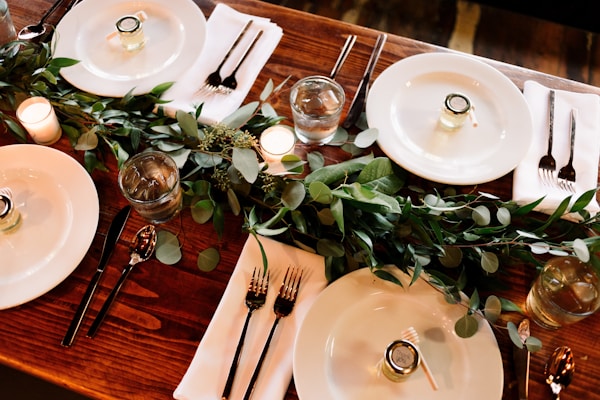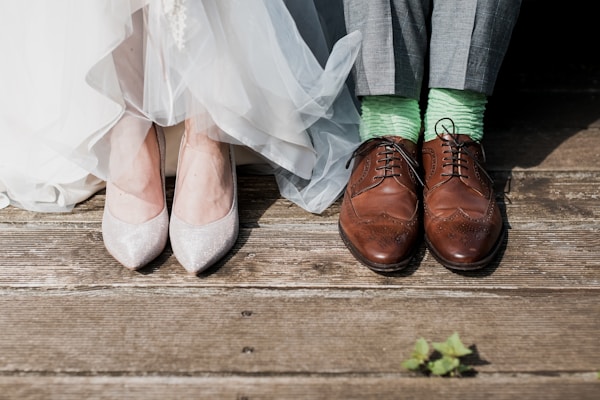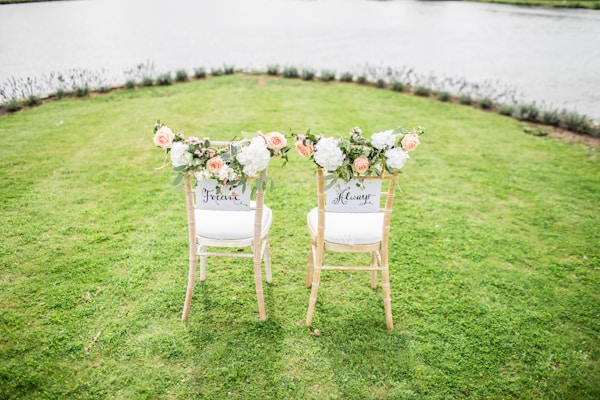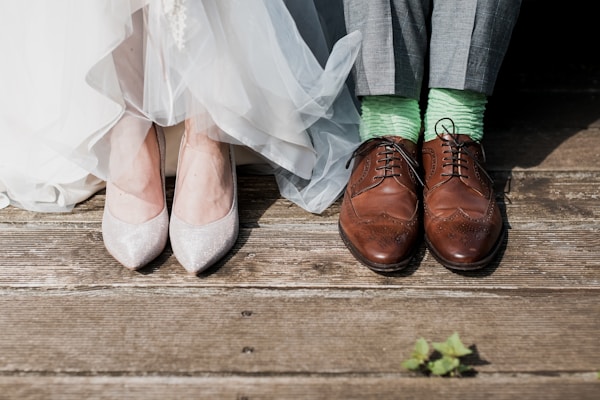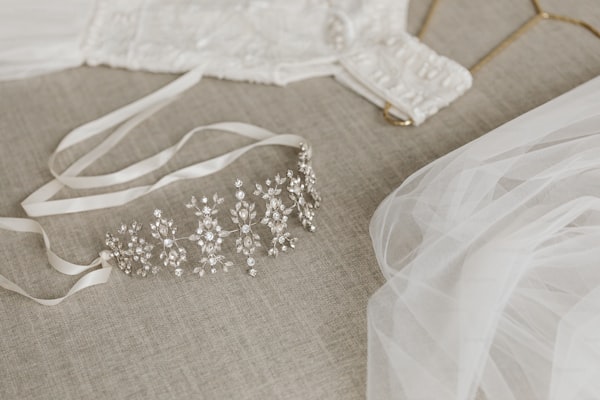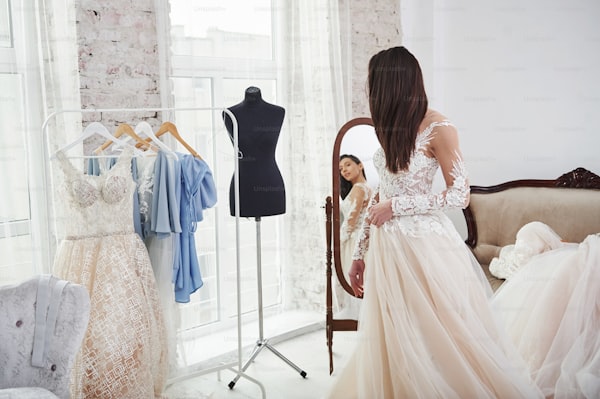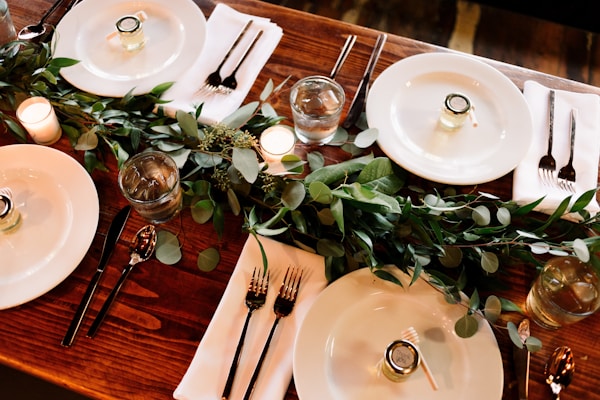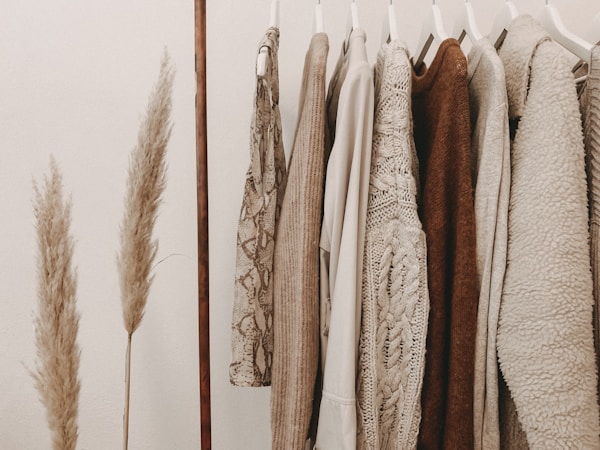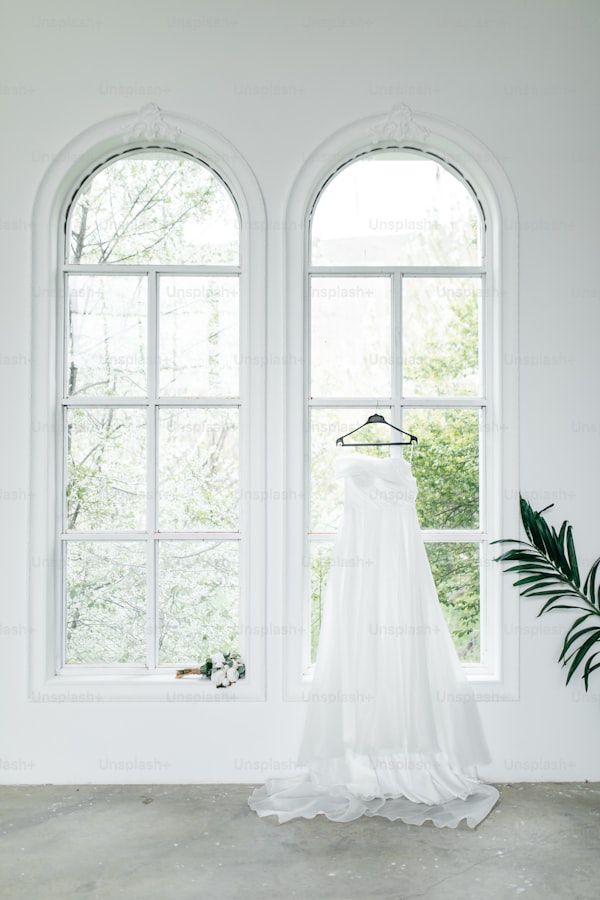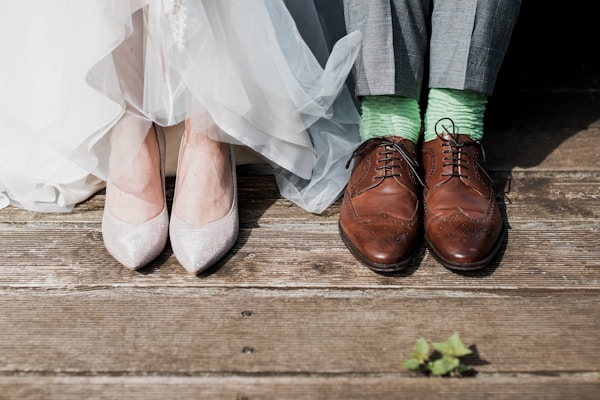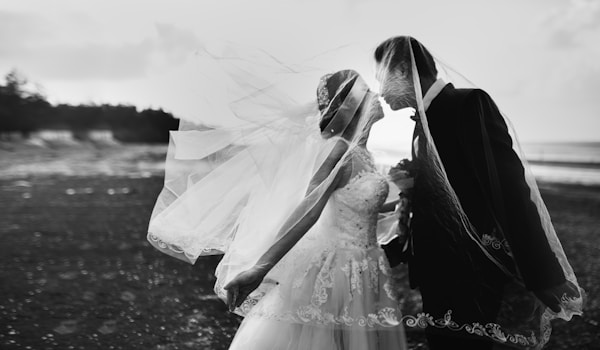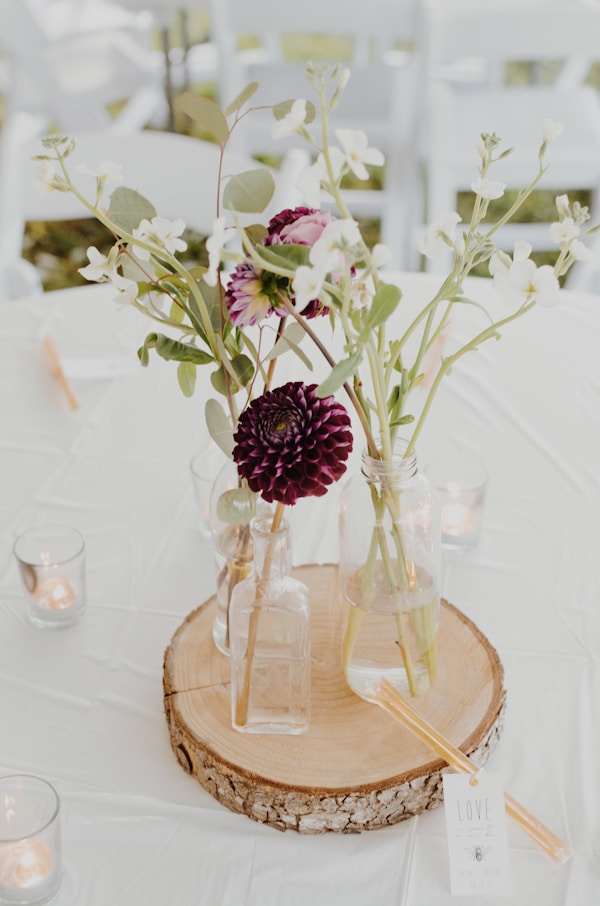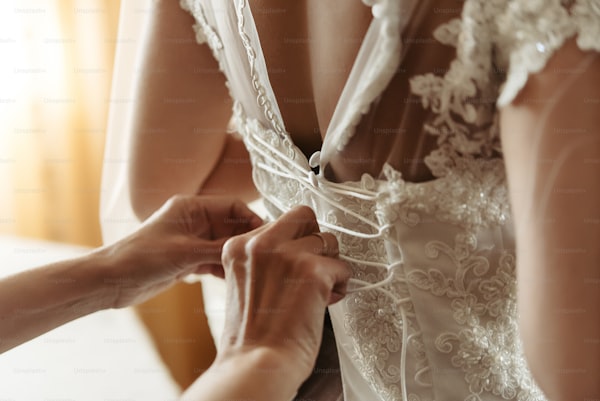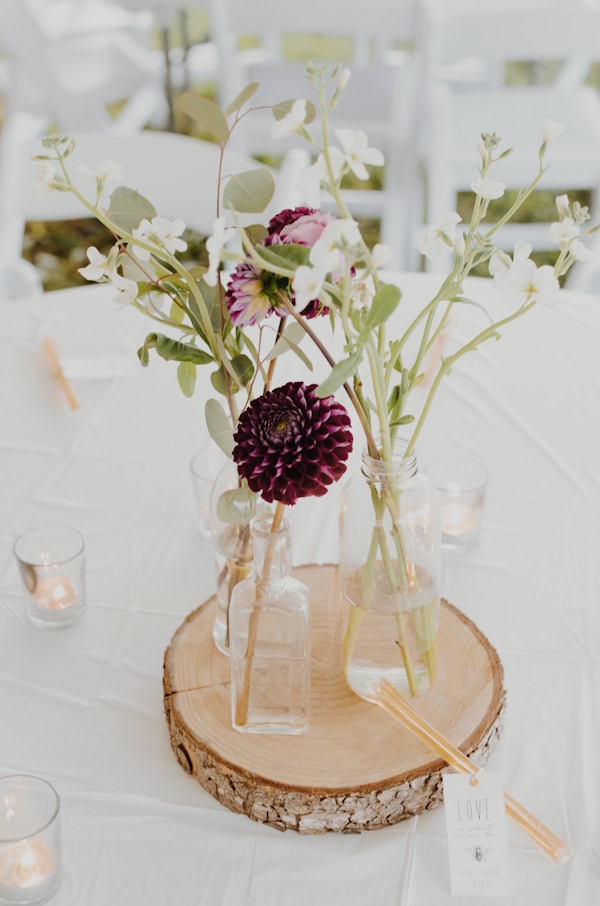Mastering Wedding Dress Alterations: A Complete Guide for Detachable Trains
Understanding Alterations for Wedding Dresses with Detachable TrainsA wedding is an extraordinary occasion filled with love, joy, and a plethora of details that come together to create the perfect day. One of the most significant aspects of a bride's appearance is her wedding dress, particularly when it features a detachable train. While the allure of a train can add an element of elegance and drama, it's crucial that the alterations are handled correctly to ensure a flawless fit. In this article, we'll delve into how to manage alterations for a wedding dress with a detachable train and why these adjustments are essential.Why Alterations are ImportantWedding dress alterations are not merely an afterthought; they are essential for achieving a polished and professional look. Here are a few key reasons why they matter: Perfect Fit: A well-fitted dress accentuates the bride's figure and ensures maximum comfort as she moves through her special day. Enhanced Style: Alterations help achieve the desired silhouette and style that complements the bride’s vision. Confidence Boost: A comfortably fitted dress allows the bride to feel her best, enhancing her confidence as she walks down the aisle.The Process of Altering a Wedding Dress with a Detachable TrainAltering a wedding dress that includes a detachable train involves special considerations. Below, we outline a step-by-step approach to ensure that the alterations are executed flawlessly. Step Details 1. Initial Fitt...
Exploring the Craftsmanship: What Methods Are Used to Create a Wedding Dress with Vintage-Inspired Beading?
Your Dream Vintage Wedding Dress AwaitsWhen it comes to wedding attire, nothing defines the beauty and elegance of a bride like a vintage-inspired wedding dress. Among the many elements that can enhance the classic look, beading plays a crucial role. This article delves into the various methods used to create exquisite wedding dresses adorned with vintage-inspired beading, focusing on the artistry and techniques that bring these stunning designs to life.The Allure of Vintage BeadingVintage-inspired beading on wedding dresses not only adds an element of glamour, but it also tells a story. The intricate designs often reflect the influence of various eras, showcasing detailed craftsmanship reminiscent of times gone by. Brides often seek these designs for their individuality and timeless appeal. So, what methods are employed in making a wedding dress with such enchanting beading?1. Hand-Beading TechniquesOne of the most traditional methods of applying beading is by hand. This technique requires immense skill and patience, as each bead is meticulously sewn onto the fabric individually. It often involves:MaterialsToolsTime RequiredGlass beads, sequins, crystalsNeedle, thread, thimbleVaries from hours to days based on designBrides can select unique vintage beads sourced from various eras, which may require extensive searching but ultimately results in a one-of-a-kind gown. The process allows for creativity, as the designer can customize the design to reflect the bride’s personality....
What to Consider When Creating a Fitted Mermaid Silhouette Wedding Dress
A Guide to Designing the Perfect Fitted Mermaid Silhouette Wedding DressChoosing the perfect wedding dress is an essential part of any bride's big day. Among the myriad options available, the fitted mermaid silhouette has gained popularity for its stunning ability to highlight a bride's curves. However, designing a wedding dress with this silhouette requires careful consideration. In this article, we'll explore the key factors to consider when creating a fitted mermaid silhouette wedding dress, from fabric selection to style and fit. We'll also address common questions that brides may have about this elegant style.Understanding the Mermaid SilhouetteThe mermaid silhouette is characterized by a fitted bodice that hugs the body and flares out around the knee. This design allows brides to showcase their figure gracefully. The choice of a fitted mermaid wedding dress can be a bold one, making it essential to understand the nuances of this style.1. Fabric SelectionChoosing the right fabric is pivotal in achieving a stunning fitted mermaid silhouette. The fabric not only affects the dress's appearance but also its comfort and fit. Here are some popular fabric choices:FabricCharacteristicsSatinLuxurious, smooth, and elegant, satin drapes beautifully to create a stunning silhouette.TaffetaA crisp fabric that holds its shape well, perfect for adding volume to the flare.LaceAdds a romantic touch, ideal for overlays on the bodice; can be paired with other fabrics for texture.ChiffonLigh...
Mastering the Art of Hand-Beading in Wedding Dress Production
How Do You Manage Production for Wedding Dresses That Require Extensive Hand-Beading?Producing wedding dresses that require extensive hand-beading is a meticulous art that combines creativity, craftsmanship, and efficiency. As the demand for unique and exquisite wedding gowns increases, designers and manufacturers are challenged to keep up with production while ensuring top-notch quality. This article will delve into the strategies and techniques used in managing production for wedding dresses, particularly those adorned with intricate hand-beaded designs.The Importance of Hand-Beading in Wedding DressesHand-beading adds a luxurious touch to wedding dresses, making each gown unique and often a reflection of the bride's personality. However, this intricate detailing requires careful planning and execution during the production process. Here are some aspects to consider:AspectDescriptionQuality ControlEnsuring that each piece of beadwork meets the desired aesthetic and quality standards.Time ManagementBalancing the time spent on hand-beading with the overall production timeline to meet deadlines.Skilled LaborRecruiting and training skilled artisans who specialize in hand-beading techniques.Steps to Manage Production Efficiently1. Develop a Detailed Production PlanA successful production process for wedding dresses involves a comprehensive plan that outlines each stage, from design to final fittings. This includes determining timelines for each task and allocating resources effe...
Unveiling Elegance: Techniques for Creating a Wedding Dress with a Cascading Veil Effect
Introduction to the Cascading Veil EffectThe cascading veil effect is a breathtaking design choice that adds drama and sophistication to a wedding dress. Brides want to make a statement on their special day, and the cascading veil achieves that in style. In this article, we will explore the various techniques used to create a wedding dress with a cascading veil effect, providing brides with detailed insights on design options, fabrics, and construction methods. What is a Cascading Veil Effect?The cascading veil effect refers to the way the veil drapes gracefully, mimicking the flow of a waterfall. This design creates a stunning visual impact, enhancing the overall look of the wedding dress. The effect may be achieved through careful selection of materials, draping techniques, and construction methods. Understanding the artistry behind this effect is crucial for brides looking for that perfect look.1. Fabric SelectionThe choice of fabric is foundational to achieving a cascading veil effect. Soft, lightweight materials such as chiffon, tulle, or organza are popular for veils due to their ability to flow and cascade beautifully. Here’s a quick overview of ideal fabrics:Fabric TypePropertiesChiffonLightweight, sheer, and flows delicatelyTulleStructured yet breathable, ideal for volumeOrganzaStiffer than chiffon; offers a more voluminous effectLaceFor added texture and elegance2. Draping TechniquesCreating the cascading effect often involves intricate draping techniques. Here are ...
How to Ensure Your Wedding Dress is Easy to Put On and Take Off
Choosing the perfect wedding dress is one of the most exciting parts of wedding planning. However, brides often overlook the importance of practicality when selecting their gown. One key question that every bride should consider is, “How do you ensure that a wedding dress is easy to put on and take off?” In this article, we will dive deep into several helpful tips and considerations that will make your wedding dress both beautiful and user-friendly.Understanding the Importance of Dress DesignWhen planning a wedding, brides typically focus on aesthetics, texture, and the latest trending styles. However, it is crucial to incorporate functionality into the design of your wedding dress. This balance ensures you can move freely and comfortably throughout your special day. Let’s explore how design choices can facilitate ease of wear.Fabric SelectionThe type of fabric you choose for your wedding dress greatly affects how easy it is to put on and take off. Here are some fabrics that are both elegant and practical:Chiffon: Light and flowy, chiffon is easy to maneuver, making it an ideal choice for easy dressing.Silk: Known for its luxurious feel, silk can also be easier to slip into, especially with minimal embellishments.Jersey: Stretchy and forgiving, jersey fabric provides comfort and ease, even during rigorous movements.Consider the Dress StructureThe overall structure of the dress is just as important as the fabric. Here are some features to consider:FeatureDescriptionAdjustable ...
Exploring the Art of Creating a Wedding Dress with an Asymmetrical Drape
Understanding Asymmetrical Drape in Wedding Dress DesignWedding dresses have long been synonymous with elegance and style, but the latest trends have introduced innovative designs that capture attention and admiration. One popular trend is the use of asymmetrical drape in wedding dress design. This technique not only offers a unique aesthetic but also allows for creative expression and versatility. In this article, we will explore the methods used to create a wedding dress with an asymmetrical drape while addressing related questions that brides-to-be may have.What is Asymmetrical Drape?Asymmetrical drape refers to the way fabric is artistically arranged to create an uneven, yet harmonious appearance. Unlike traditional designs that follow symmetry, asymmetrical dresses often feature one shoulder, uneven hemlines, or differing lengths on either side. This style emphasizes the bride’s individuality and allows her to stand out on her special day.Methods for Creating Asymmetrical DrapesDesigning a wedding dress with an asymmetrical drape involves several techniques that combine fabric manipulation, sewing, and tailoring. Here are some of the primary methods used:MethodDescription1. Draping TechniquesUsing a dress form to experiment with fabric in real-time allows designers to visualize how fabric interacts and falls, enabling the creation of unique asymmetrical shapes.2. Bias CuttingCutting fabric on the bias (diagonal) allows for more flexibility and movement, leading to elegan...
Mastering Wedding Dress Alterations for High Necklines
How Do You Handle Alterations for a Wedding Dress with a High Neckline?When it comes to planning the perfect wedding, every detail matters. One of the most significant aspects of a bride's attire is her wedding dress. Among various styles, a high neckline wedding dress carries a unique charm. However, alterations are often necessary to ensure the perfect fit. In this article, we will guide you through how to handle alterations for a wedding dress with a high neckline, addressing common concerns and providing tips for the best results.Understanding the Importance of a Good FitA wedding dress that fits perfectly can enhance your overall appearance, boost your confidence, and ensure you feel comfortable throughout your big day. The high neckline style is increasingly popular among brides, as it blends elegance with modesty. Yet, these dresses often require intricate alterations to ensure they fit the wearer’s body perfectly.Common Issues with High Neckline Wedding DressesBefore diving into the alteration process, it’s essential to identify common issues that brides face with high neckline dresses: Too Tight at the Neckline: If the dress is too snug, it can be uncomfortable and may create an unflattering silhouette. Length Adjustments: High necklines often come with additional fabric that may need adjusting to maintain balance and harmony in the dress's overall look. Shoulder Fit: Many high-neck dresses can pull on the shoulders, which requires careful adjustments to avo...
Unveiling Elegance: Best Practices for Creating a Wedding Dress with a Layered Organza Skirt
Introduction to Layered Organza Skirts in Wedding Dresses When it comes to wedding dresses, the layered organza skirt is a timeless choice that embodies elegance and grace. The ethereal look of organza not only enhances the beauty of a wedding gown but also provides a stunning silhouette that captures attention. In this article, we will delve into the best practices for creating a wedding dress featuring a layered organza skirt, offering insights into materials, design techniques, and styling tips. Understanding Organza: The Fabric of Choice Organza is a lightweight and sheer fabric, typically made from silk or polyester. Its crispness allows for structure while maintaining a delicate appearance. Here are key points to consider when working with organza: Property Description Sheerness The transparency of organza creates a layered visual effect which enhances the overall design. Structure Organza holds shape well, making it ideal for creating voluminous skirts. Weight Its lightweight nature allows for easy layering without overwhelming the gown. Finishing Organza can easily take on different finishes, such as matte or shiny, affecting the gown's overall look. Best Practices for Designing with Layered Organza Creating a wedding dress with a layered organza skirt involves a combination of creativity and technical skill. Here are some best practices to ensure your dress turns out spectacular: Selecting the Right Materials Aside from organza, consider pairing it with ...
How to Design a Wedding Dress That Can Accommodate an Elaborate Hairstyle
Weddings are one of the most momentous occasions in a person's life, and every detail matters—from the décor to the venue, from the flowers to the wedding dress. Among these details, an elaborate hairstyle often stands out, framing the bride's visage and enhancing her overall beauty on her special day. However, an intricate hairstyle necessitates careful consideration when selecting and designing a wedding dress. In this article, we will explore how to design a wedding dress that can accommodate an elaborate hairstyle, ensuring that brides can both look stunning and feel comfortable.Understanding the Importance of Bridal Hairstyles in Wedding DesignBridal hairstyles play a vital role in the overall look of the bride on her wedding day. The hairstyle can impact the choice of the wedding dress significantly, as it sets the tone for the outfit. An elaborate hairstyle, such as an intricate updo or cascading curls adorned with flowers or jewels, requires a dress that complements and does not clash with the hair. Therefore, understanding how these two elements interact is crucial for achieving a harmonious bridal appearance.Key Factors to Consider in Wedding Dress DesignWhen designing a wedding dress that accommodates an elaborate hairstyle, several key factors must be considered:FactorDescriptionNecklineA higher neckline can accommodate elaborate hairstyles by providing a balanced visual effect.Back DesignAn open back may draw attention to the hairstyle while offering a sophistica...
Unveiling the Art: Techniques Used to Create a Wedding Dress with Pearl Embellishments
IntroductionWedding dresses are more than just garments; they are the embodiment of dreams, aspirations, and individual style. Among the myriad of designs and embellishments available, pearl embellishments stand out as a timeless choice that brings elegance and sophistication to any wedding gown. What techniques are used to create a wedding dress with pearl embellishments? In this article, we will delve into the various methods employed in crafting these exquisite dresses, along with tips and considerations for brides-to-be.The Allure of Pearl EmbellishmentsPearls have been a symbol of beauty and purity for centuries. Incorporating these lustrous gems into wedding dresses not only enhances their visual appeal but also adds a layer of texture and depth. The subtle shine of pearls complements various fabrics, making them a versatile choice for any bridal style.Techniques for Creating Pearl-Embellished Wedding DressesTechniqueDescriptionBeadingUsing needle and thread or specialized tools, pearls are sewn directly onto the fabric, either in intricate patterns or as standalone accents.AppliquéPearls are attached to pieces of fabric which are then sewn onto the dress, allowing for creative designs and textures.Embroidered Pearl DetailingIncorporates pearls into embroidered designs, creating a harmonious blend of textures.StencilingA stencil is used to outline shapes, after which pearls are adhered to follow the design, ensuring uniformity.Hot Glue ApplicationPearls can be attached ...
How to Ensure a Wedding Dress Stays Secure on the Shoulders: Essential Tips and Tricks
IntroductionYour wedding day is one of the most memorable moments in your life, and the perfect wedding dress plays a crucial role in making that day truly special. However, one of the common concerns brides face is how to ensure that the wedding dress stays secure on the shoulders throughout the event. This article will explore various strategies and tips for ensuring the dress fits perfectly, remains comfortable, and stays in place during one of the biggest days of your life.Understanding Dress Types and Their ConstructionBefore diving into tips for keeping your wedding dress secure, it’s essential to understand the different types of wedding dresses and their construction. Here are some popular styles:Type of DressDescriptionCommon Security FeaturesStraplessNo shoulder straps, creating a chic silhouette.Silicone grips, boningOff-the-shoulderSpaghetti straps or sleeves that extend just off the shoulder.Elastic bands, tailored fittingsSleevedDress includes fabric or lace sleeves for added support.Fitted sleeves, higher necklineDifferent styles depend on various construction techniques, and knowing your dress type will help in choosing the appropriate security adjustments.1. Choose the Right SizeChoosing the correct size is crucial for ensuring that your wedding dress stays secure. A poorly fitted dress is more likely to shift or slip during the ceremony or celebration. Always get measured by a professional and try on multiple sizes to find your perfect fit.2. Alterations: A ...
Crafting the Perfect Wedding Dress with a Sleek, Minimalist Design
When it comes to wedding gowns, the choices are endless. Many brides dream of a dress that reflects their personal style while remaining timeless and elegant. One popular trend that has emerged in recent years is the sleek, minimalist design. But what methods are used to create a wedding dress with a sleek, minimalist design? This article will explore the essential techniques and considerations that go into crafting such a stunning gown.Understanding Minimalism in Wedding Dress DesignThe minimalist design is characterized by simplicity and a focus on clean lines. This style emphasizes the inherent beauty of the fabric and cut, rather than relying on excessive embellishments. Key features often include: Simplified silhouettes High-quality fabrics Neutral or muted color palettes Subtle yet striking detailsThe Process of Creating a Minimalist Wedding DressCreating a wedding dress with a sleek, minimalist design involves several steps, from conceptualization to the final fitting. Below are the primary methods employed by designers:1. Research and InspirationDesigners often start with research to gather inspiration. This could involve looking at current fashion trends, past styles, and even nature. The goal is to develop a vision that embodies the essence of minimalism while being unique. Designers might explore various themes, colors, and fabrics that resonate with the minimalist aesthetic.2. Choosing the Right FabricThe choice of fabric is crucial in creating a dress...
Mastering Production Timelines for Intricately Embroidered Wedding Dresses
IntroductionManaging production timelines for wedding dresses, particularly those adorned with extensive embroidery, is a vital aspect for designers, seamstresses, and bridal boutiques. As the bridal industry evolves, the demand for intricately designed wedding dresses continues to rise. This complexity necessitates a structured approach to ensure timely delivery without compromising quality. In this article, we will explore effective strategies for managing production timelines for wedding dresses with intricate embroidery, helping you navigate through the delicate balance of design and timely execution.Understanding the Scope of the EmbroideryBefore diving into the timeline management, it is crucial to fully understand the scope of the embroidery involved in wedding dress production. Extensive embroidery can range from floral patterns to intricate lace designs, each requiring different approaches and timelines. Consider the following factors: Design Complexity: The more complex the design, the longer it will take to execute. Simple floral embroidery might be completed in a day, while elaborate patterns can take weeks. Fabric Type: Lightweight fabrics may be easier to embroider compared to heavier materials. Understanding your fabric can help forecast challenges that may delay production. Embroiderer's Skill Level: The experience of the embroiderer affects production speed. Skilled artisans can produce higher-quality work more quickly.Creating a Detailed Production ...
Creating a Wedding Dress with a Detachable Overlay Skirt: A Comprehensive Guide
What are the Steps for Creating a Wedding Dress with a Detachable Overlay Skirt?Designing a wedding dress is a dream come true for many fashion enthusiasts and brides-to-be. One of the latest trends in bridal fashion is the wedding dress with a detachable overlay skirt. This unique style offers versatility, allowing the bride to transition from a traditional look to a more modern aesthetic with ease. In this guide, we will explore the steps involved in crafting a wedding dress with a detachable overlay skirt, covering everything from initial design concepts to final fittings.1. Conceptualization: Understanding the DesignThe first step in creating a wedding dress with a detachable overlay skirt is to visualize the desired design. Start by considering the following elements:Style: What is the preferred style? (e.g., A-line, ball gown, mermaid)Fabric: Which materials will you use? (e.g., lace, tulle, satin)Color: Do you want a classic white dress, or are you considering colors like blush or champagne?Overlay Design: Will the overlay be sheer, layered, or embellished?Taking time to sketch your ideas or create a mood board can help crystallize your vision.2. Fabric SelectionOnce you have a clear design concept, the next step is to select the right fabrics. Each fabric contributes differently to the overall look and feel of the dress. When choosing materials, consider the following:Weight: Lighter fabrics like chiffon and tulle work well for overlay skirts, providing a delicate fee...
Creating the Perfect Wedding Dress: The Balance of Modern Trends and Timeless Elegance
How Do You Design a Wedding Dress That Is Both Modern and Timeless?Designing a wedding dress that combines modern appeal with timeless elegance is a delicate balance to achieve. As weddings evolve, so do trends, materials, and styles. However, many brides still cherish the idea of wearing a wedding dress that transcends time, allowing them to look back on their wedding day with fondness rather than regret. In this article, we will explore various aspects of wedding dress design that contribute to a modern yet timeless aesthetic, drawing on trending materials, styles, and design elements that cater to this duality.Understanding Modern and Timeless ElementsTo effectively merge modern and timeless elements in wedding dress design, we must first define what these terms mean in the context of fashion. Modern designs often feature innovative cuts, unexpected materials, and contemporary styles that reflect current fashion trends. Timeless designs, on the other hand, capture a classic aesthetic that remains appealing through the ages.Key Attributes of Modern Wedding DressesInnovative Fabrics: Modern wedding dresses often incorporate advanced materials such as neoprene, lightweight tulle, or even eco-friendly fabrics.Asymmetrical Cuts: Designers play with silhouettes, often opting for asymmetry or unconventional hemlines to create a striking appearance.Minimalist Styles: A trend leaning towards simplicity with clean lines, allowing the bride’s natural beauty to shine.Defining Timeless...
Unveiling the Secrets: Techniques to Create a Wedding Dress with a Pleated Chiffon Bodice
IntroductionChoosing the perfect wedding dress is a pivotal moment for brides around the world. Many brides opt for different fabrics and styles to ensure their dress complements their unique personality and the theme of their wedding. One exquisite option is a wedding dress featuring a pleated chiffon bodice. With its elegant draping and soft texture, chiffon is a favorite among designers. This article explores the techniques used to create a wedding dress with a pleated chiffon bodice, ensuring you are informed about various aspects of the construction process.Understanding ChiffonChiffon is a lightweight, sheer fabric known for its flowing characteristics. It is typically made from silk, nylon, or polyester and is beloved for its soft drape. When designing a wedding dress, the choice of fabric plays a critical role in the final appearance and feel of the garment.1. Fabric SelectionBefore diving into the techniques required to create a pleated chiffon bodice, the first step is selecting high-quality chiffon. The fabric’s texture, weight, and color will significantly influence the overall design. Look for chiffon that has a slight sheen to achieve that luxurious bridal look.2. Designing the BodiceThe bodice of a wedding dress is what holds everything together and defines the overall silhouette. For a pleated chiffon bodice, sketching the initial design is vital. Consider the neckline (strapless, sweetheart, or off-shoulder) to determine how the fabric will be pleated and dra...
Ultimate Guide: How Do You Handle Alterations for a Wedding Dress with an Off-the-Shoulder Neckline?
When it comes to planning a wedding, finding the perfect dress is often at the top of the list for many brides. Among the many styles available, an off-the-shoulder neckline has become increasingly popular for its romantic and elegant look. However, navigating alterations for such a unique design can be a challenge. In this comprehensive guide, we will explore how to handle alterations for a wedding dress with an off-the-shoulder neckline, ensuring that you achieve the perfect fit for your special day.Understanding the Uniqueness of Off-the-Shoulder NecklinesThe off-the-shoulder neckline style showcases the shoulders and collarbone, creating a delicate and sophisticated appearance. However, it also poses specific alteration challenges. Unlike standard neckline styles, which can easily be adjusted, off-the-shoulder designs require careful planning and execution to maintain their intended look. Therefore, understanding your dress's features and how they interact with various body types is essential.Common Issues with Off-the-Shoulder NecklinesMany brides experience similar challenges when fitting their off-the-shoulder wedding dresses. Here are some common issues:ChallengeSolution1. Slipping or sliding necklineConsult with your tailor on proper support fabrics and techniques, such as adding silicone grips.2. Gaping at the armpit areaA skilled tailor can pinch the excess fabric to create a snug fit without compromising comfort.3. Length adjustments affecting the necklineWork clo...
Exploring the Art of Creating Wedding Dresses with Intricate Beadwork on the Train
Understanding the Craftsmanship Behind Intricate Beadwork on Wedding Dress TrainsWhen it comes to wedding dresses, few details are as captivating as intricate beadwork on the train. This exquisite element not only enhances the overall elegance of the gown but also reflects the personality and style of the bride. In this article, we will explore the various methods used to create a wedding dress with intricate beadwork on the train, discuss the materials involved, and answer some frequently asked questions that brides and designers might have regarding this beautiful craft.What Makes Beadwork Special in Wedding Dresses?Beadwork has been a staple in fashion for centuries. For wedding dresses, it serves multiple purposes: to add visual interest, to highlight certain areas of the gown, and to create a sense of luxury and glamour. The train of a wedding dress is a particularly significant area where beadwork can shine, flowing elegantly behind the bride as she walks down the aisle.Popular Beadwork TechniquesThere are several methods used to create intricate beadwork on the train of wedding dresses. Each technique can create different looks and textures and can significantly influence the design and overall feel of the dress. Here are the primary methods: Hand Beading: This is the most traditional method, involving skilled artisans meticulously stitching each bead onto the fabric. This method allows for exceptional detail and customization. Machine Beading: For a more efficie...
How to Ensure a Wedding Dress with a Fitted Bodice Allows for Easy Movement
The Importance of Comfort in Wedding Dress FittingsWhen it comes to planning a wedding, choosing the perfect dress is often at the top of the list for brides. However, many brides find themselves grappling with the balance between style and comfort, especially when it comes to dresses with a fitted bodice. How do you ensure a wedding dress with a fitted bodice allows for easy movement? This article will guide you through essential tips and considerations to make sure you can glide down the aisle with grace and ease. Understanding the Fitted BodiceA fitted bodice is designed to hug the torso, accentuating the natural shape of the body. While they offer a flattering silhouette, they can sometimes restrict movement. Here are some key points to consider: Fabric Choice: The type of fabric you select can greatly affect your comfort. Lightweight materials like chiffon, silk, or woven cotton allow better movement than heavier fabrics like taffeta or satin.Design Features: Look for designs with elements like strategically placed panels, stretchable sections, or even corsets that provide support while allowing movement.Size and Fit: Ensuring the correct size and fit is crucial. A fitted bodice that is too tight can restrict mobility, making it challenging to walk or dance. Tips for Ensuring Easy Movement in a Fitted Bodice Wedding DressMoving comfortably in your wedding dress is possible with the right approach. Below are several practical tips: 1. Prioritize the Right MeasurementsOne ...
